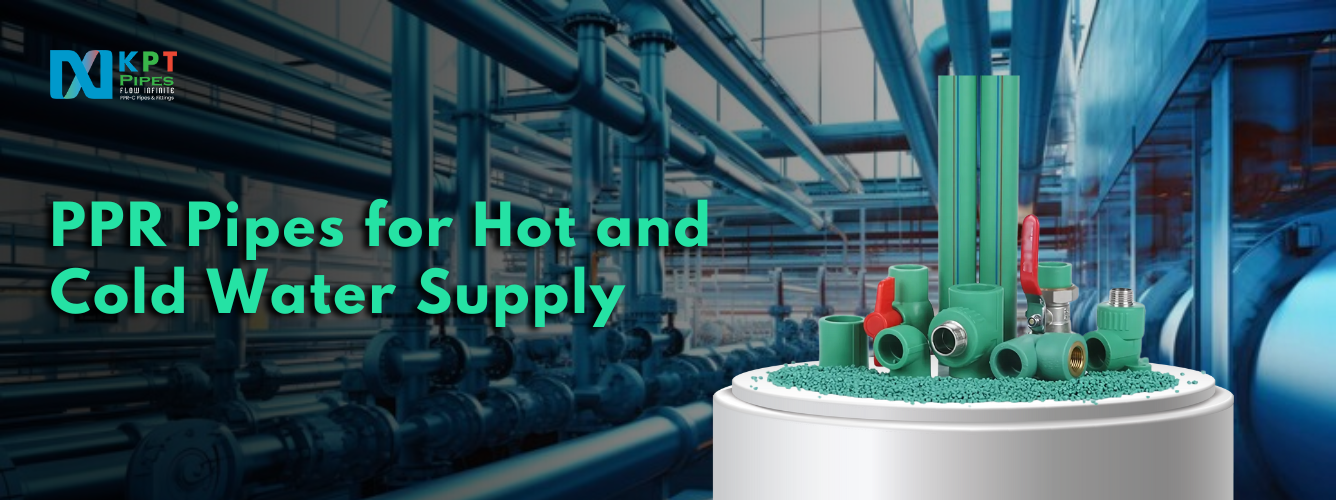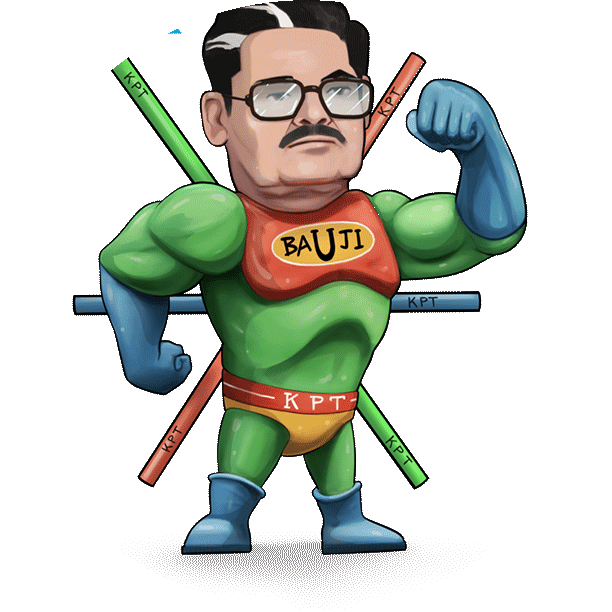
26 Oct PPR Pipes for Hot and Cold Water Supply: Applications and Benefits
When it comes to modern plumbing systems, choosing the right materials for piping is crucial. Among the various options available, Polypropylene Random Copolymer (PPR) pipes have emerged as a popular choice for both hot and cold water supply. This blog explores the applications and key benefits of PPR pipes, highlighting why they are a preferred solution in residential, commercial, and industrial settings.
Understanding PPR Pipes
PPR pipes are constructed from a thermoplastic known as Polypropylene Random Copolymer. This material is engineered to withstand high pressures and temperatures, making it suitable for a variety of plumbing applications. The unique molecular structure of PPR contributes to its durability, flexibility, and resistance to corrosion, making it an ideal choice for transporting both hot and cold water.
Key Characteristics of PPR Pipes
Before delving into their applications and benefits, it is essential to understand the key characteristics of PPR pipes:
- Corrosion Resistance: PPR pipes do not corrode, rust, or scale over time, unlike metal pipes. This characteristic guarantees an extended lifespan and reduced maintenance expenses.
- Thermal Stability: PPR pipes can withstand temperatures of up to 95°C (203°F), making them suitable for hot water applications. Their thermal conductivity is low, meaning they are less likely to lose heat.
- Lightweight: Compared to metal piping, PPR pipes are significantly lighter, which simplifies handling and installation.
- Jointing Methods: PPR pipes are joined using fusion welding techniques, creating a strong and leak-proof bond.
- Eco-Friendly: PPR is a recyclable substance, thereby promoting environmental sustainability.
Applications of PPR Pipes
PPR pipes exhibit versatility, making them appropriate for various applications. Here are some of the most common uses:
1. Hot Water Supply Systems
One of the primary applications of PPR pipes is in hot water supply systems. Their capacity to endure elevated temperatures renders them particularly suitable for:
- Residential Water Heating: PPR pipes are commonly used in home plumbing systems to transport hot water from boilers or water heaters to bathrooms, kitchens, and other fixtures.
- Heating Systems: In floor heating systems or radiator heating setups, PPR pipes are used due to their thermal stability and ability to handle high pressure.
2. Cold Water Supply Systems
PPR pipes are equally effective for cold water supply. Their durability and corrosion resistance ensure a reliable flow of cold water in various applications:
- Potable Water Systems: PPR pipes are widely used for drinking water supply due to their non-toxic nature and resistance to bacterial growth. They comply with health and safety standards, ensuring the water remains clean and safe.
- Irrigation Systems: In agriculture, PPR pipes are used for irrigation systems due to their lightweight and durability, allowing for easy installation and long-term performance.
3. Industrial Applications
In industrial settings, PPR pipes are employed for transporting fluids in various processes:
- Chemical Transport: Their chemical resistance makes PPR pipes suitable for transporting various chemicals and corrosive substances in industries such as pharmaceuticals, food and beverage, and manufacturing.
- Cooling Systems: PPR pipes are used in cooling systems for equipment and machinery, ensuring efficient heat transfer without the risk of corrosion.
4. Air Conditioning and Refrigeration
PPR pipes can also be used in air conditioning and refrigeration systems. They are capable of transporting refrigerants and chilled water without the risk of leaking or degrading over time.
5. Firefighting Systems
PPR pipes are increasingly being used in firefighting systems due to their durability and resistance to high temperatures. They can effectively transport water to fire hoses and sprinkler systems.
Key Benefits of PPR Pipes
PPR pipes offer numerous benefits that make them an attractive choice for hot and cold water supply systems. Below are some of the most notable benefits:
1. Durability and Longevity
PPR pipes are known for their exceptional durability. They are capable of withstanding significant pressures and temperatures, making them appropriate for a diverse array of applications. With proper installation and maintenance, PPR pipes can last for over 50 years, significantly reducing the need for replacements and repairs.
2. Cost-Effectiveness
While the initial investment in PPR piping may be slightly higher than traditional materials, their long lifespan and low maintenance costs make them a cost-effective solution in the long run. Additionally, their lightweight nature reduces installation costs, as less labor and equipment are required.
3. Resistance to Corrosion and Scaling
PPR pipes do not corrode or scale, ensuring a constant flow of water without the buildup of deposits that can restrict flow. This property extends the life of the plumbing system and reduces maintenance needs.
4. Ease of Installation
The lightweight nature of PPR pipes makes them easy to handle and install. The fusion welding method used for joining PPR pipes creates a strong bond without the need for additional fittings or adhesives. This reduces the complexity of installation and ensures a leak-proof system.
5. Non-Toxic and Safe
PPR pipes are safe for use as they do not emit any harmful substances into the water supply. They are compliant with health and safety regulations, making them a safe choice for potable water applications.
6. Thermal Insulation
PPR pipes possess low thermal conductivity, allowing them to retain heat more effectively than other materials. This property is particularly beneficial for hot water supply systems, reducing energy loss and improving efficiency.
7. Eco-Friendly Option
PPR is a recyclable material, which supports efforts towards environmental sustainability. Using PPR pipes reduces the overall carbon footprint of plumbing systems and aligns with green building practices.
8. Wide Range of Sizes and Fittings
PPR pipes are available in various sizes and fittings, making them suitable for a wide range of applications. Whether for residential or industrial use, there are PPR pipe options to meet specific needs.
Maintenance and Care for PPR Pipes
While PPR pipes are low maintenance, some care practices can help extend their lifespan:
- Regular Inspection: Periodically inspect piping systems for any signs of damage or wear. Addressing issues early can prevent more significant problems.
- Avoiding Excessive Heat: While PPR pipes can handle high temperatures, avoid exposing them to excessive heat from external sources, as this could compromise their integrity.
- Proper Installation: Ensure that PPR pipes are installed correctly, using appropriate fusion welding techniques. Poor installation can lead to leaks and reduced performance.
- Clean Water Supply: Using clean water in PPR piping systems helps prevent bacterial growth and maintains water quality.
Conclusion
PPR pipes are a reliable and efficient choice for hot and cold water supply systems, offering a multitude of applications across residential, commercial, and industrial settings. Their durability, resistance to corrosion, and cost-effectiveness make them a smart investment for any plumbing project.
As technology advances and environmental concerns grow, the demand for sustainable and efficient plumbing solutions continues to rise. PPR pipes not only meet these demands but also provide a safe, reliable, and eco-friendly option for modern plumbing systems. If you’re considering upgrading your plumbing infrastructure, PPR pipes may be the right choice to ensure long-lasting performance and peace of mind.
FAQs
Q1. Can PPR pipes be used for both hot and cold water?
Ans: PPR pipes are appropriate for use in both hot and cold water supply systems, contributing to environmental sustainability. They can withstand temperatures up to 95°C (203°F) for hot water and are also effective for transporting cold water in residential and industrial settings.
Q2. How long do PPR pipes last?
Ans: PPR pipes have a long lifespan, often exceeding 50 years with proper installation and maintenance. Their durability and resistance to corrosion make them a reliable choice for plumbing systems.
Q3. Are PPR pipes safe for drinking water?
Ans: Yes, PPR pipes are non-toxic and do not leach harmful substances into the water supply. They are compliant with health and safety regulations, making them a safe option for transporting potable water.




